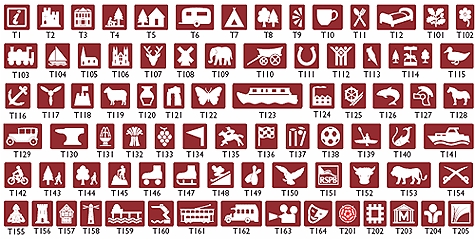Applicants should check that their tourist destination satisfies the criteria in the following areas:
Tourist destination
Tourist signs applications will be assessed against location criteria which varies dependent on whether they are classed as an urban or rural location. These are defined as:
| Urban | Rural | |
|---|---|---|
| Location description | Vehicular access to the tourist destination is from a public highway which has a maximum speed limit set at 40 mph or below. | Vehicular access to the tourist destination is from a public highway which has a maximum speed limit set at above 40 mph. |
| Tourist attraction criteria |
Individual attractions will not normally be signed. Provision of signs for larger tourist attractions may be considered if a benefit in terms of traffic management and/or road safety is achieved. |
Signing may be provided if the 'quality criteria' are met. |
| Tourist facilities criteria |
Individual attractions will not normally be signed. Provision of signs for larger tourist attractions may be considered if a benefit in terms of traffic management and/or road safety is achieved. |
Signing may be provided if the 'quality criteria' are met. Signs to facilities will not normally be provided in village situations, however, they may be considered if a benefit in terms of traffic management and/or road safety is achieved. |
To prevent an overload of information signs on individual junctions a maximum number of tourism signs is permitted as follows:
- roads with a speed limit of 30 mph or 40 mph- 3
- roads with a speed limit of 50 mph and above- 4
- where more than the maximum number of tourist traffic signs is reached at a particular junction, priority will be given to the destinations with the greatest visitor numbers
It should not be assumed that tourist traffic signs will be provided on all suitable access routes to a tourist destination.
Please note that eligibility under the 'quality criteria' and 'locational criteria' does not mean entitlement to signage.
Attraction quality
The applicant must demonstrate as part of the application that the tourist destination meets the following quality criteria:
- all relevant consents are in place from other authorities (where applicable) e.g. appropriate planning permission, possession of a fire certificate and certificates of health and hygiene for staff involved in food preparation
- parking is:
- safely accessible either on site, or close by (within 250m). Note: in most cases, on-street parking will not be considered an acceptable replacement for off-road parking
- able to meet the requirements of visitors in terms of capacity, and to accommodate buses where necessary
- able to provide some secure cycle parking facilities.
- there are adequate toilets, including facilities for disabled people, either at the destination or close by
- there is adequate publicity material, including a clear and accurate map and/or directions
- the destination generally is of good quality, well maintained and adheres to the accessibility standards suitable for its use, notably legislation relating to disabled access contained within the Disability Discrimination Act 1995
- tourist attractions are accredited by the 'Visitor Attraction Quality Assurance Service', or by another recognised national or regional organisation of this sort
- tourist facilities are recognised by an appropriate body, concerned with maintaining quality standards
Please note that eligibility under the 'Quality Criteria' and 'Locational Criteria' does not mean entitlement to signage.
Location of attraction
Examples of organisations which would be acceptable are as follows:
| Attraction | Quality assurance requirement |
|---|---|
| Areas of special interest | Natural England |
| Beaches, picnic areas, view points | Blue Flag Awards, Tidy Britain Awards |
| Historic churches, abbeys and cathedrals | VisitBritain |
| Historic properties and castles | National Trust, English Heritage, VAQAS |
| Museums and ancient monuments | Museum Council, English Heritage |
| Park and gardens | Royal Horticultural Society |
| Theme parks | VisitBritain, International Association of Amusement Parks and Attractions |
Tourist facility
Examples of the various schemes in operation are as follows:
| Facility | Quality assurance requirement |
|---|---|
| Caravan sites and Camping sites |
The following requirements must be met:
|
| Chalets and cabins | Must be accredited by the 'British Graded Holiday Parks Scheme' or the VisitBritain 'National Quality Assurance Scheme', and meet the English Tourist Board's quality standard for self-catering accommodation. |
| Hotels, guest houses, bed and breakfast |
The establishment should be recognised by one of the following schemes:
|
| Theatres, cinemas and concert venues | Member of the Arts Council |
| Public houses |
The following requirements should be met:
|
| Restaurants and cafés |
The following requirements should be met:
|
| Leisure and sport facilities | Applicants should refer to the self-assessment and improvement planning guidelines issued by Sport England. |
